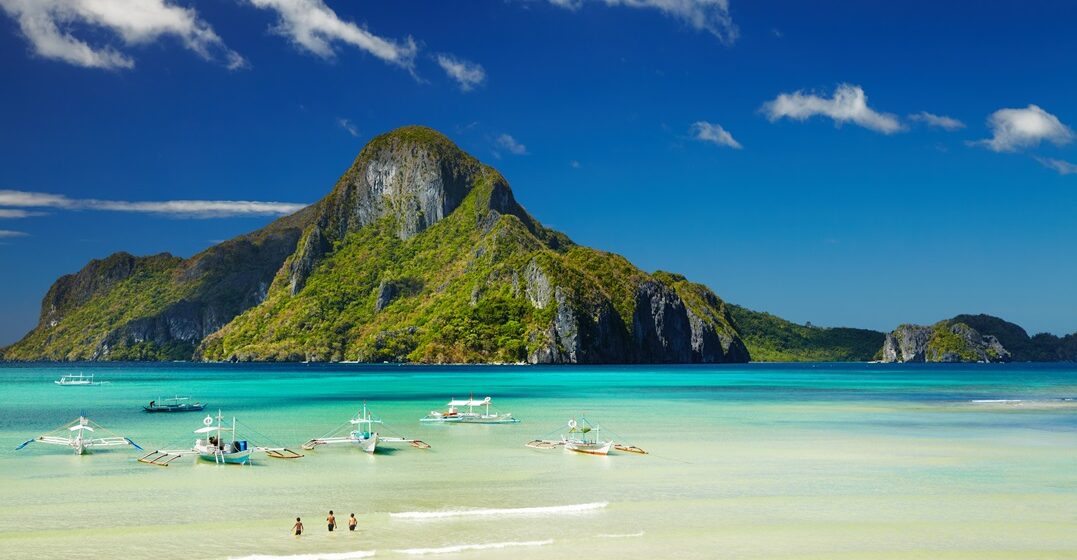Published on October 31, 2023

Is Spanish spoken in the Philippines?

Do people in the Philippines speak Spanish? Yes and no. To understand the influence of the Spanish language in the Philippines, it helps to know a bit of geography and history.
The Philippine Archipelago includes three major island groups: Luzon in the north, Visayas in the center and Mindanao in the south. The unique geography of these 7,641 islands — each isolated and yet clustered in relatively close proximity — has allowed a multitude of languages to endure over time. Today over 130 languages are spoken in the country, including several Spanish Creole languages and Chinese dialects.
The term “Philippine Spanish” can refer to three things: the Spanish spoken in the Philippines during colonial times, the Spanish Creole languages still spoken today or the general influence of Spanish on Filipino languages. In this article, we’ll discuss all three and learn about the history of the Spanish language in the Philippines.
To better define what “Philippine Spanish” means, let’s start with some history.
The name of the Philippines itself comes from King Philip II of Spain. Famous explorer Ferdinand Magellan christened the archipelago in honor of his patron and claimed the Philippines as King Philip’s property in 1521.
Shortly after this claim, Magellan was killed by native Filipino combatants in the Battle of Mactan. Chief Lapu-Lapu’s victory on the Island of Mactan delayed Spanish occupation for over 40 years, but it didn’t hold off the Spanish Empire forever. Spanish rule began in 1565 and lasted over 330 years, until the initial stages of the Philippine-American War in 1898.
Fun fact: Magellan’s death on the Island of Mactan ended his attempt at becoming the first man to circumnavigate the Earth. It’s believed that Enrique of Malacca, Magellan’s enslaved servant from what is now Indonesia, was the first to complete the voyage.
Philippine Spanish — also known as español filipino or castellano filipino — began as a colonial construct. The Spanish colonizers offered free universal education taught in Spanish. For over three centuries of Spain’s rule, Spanish was the only official language of the Pilipinas.
After a subsequent colonization by the United States in 1899, Spanish remained a co-official language along with Filipino and English, but English aggressively took over education and politics.
Philippine Spanish was (and still is) spoken among Spanish Filipinos, i.e. people living in the Philippines with ancestry from primarily Spain and Mexico. A constitutional change in 1973 removed Spanish as an official language, though it was reinstated by a presidential decree a few months later.
Is Spanish still spoken in the Philippines today? Yes. Philippine Spanish, as described above, is still spoken in the country. In 2014 the Instituto Cervantes estimated Spanish speakers in the Philippines to number around two million or about 2% of the total population.
But there is also another type of Philippine Spanish spoken by about one million modern-day Filipinos: Chavacano.
Chavacano is a language group of six dialects of Philippine Spanish, sometimes also referred to as Zamboangueño. These dialects include a high number of loanwords from native Filipino languages. Chavacano is spoken mainly in Zamboanga province, in the southern region of Mindanao and the northern region of Luzon.
While the vocabulary of Chavacano dialects and Spanish have a lot of overlap, Chavacano’s grammatical structure is based on Filipino languages. Even so, some YouTube videos demonstrate that Chavacano and Spanish are mutually intelligible to a certain extent.
The Philippines, as a country, survived perhaps the most intense and long-lasting period of Spanish imperialism and colonization on Earth. The fact that nearly all of Latin America speaks Spanish while the Philippines has retained indigenous national languages is a testament to the resilience of Filipino culture.
Though the islands’ geography supports a number of regional languages, there are two major Filipino languages spoken by most native-born Filipinos today: Cebuano and Tagalog.
Tagalog is heavily influenced by Philippine Spanish. An estimated 20–30% of Tagalog comes from Spanish, including about 4,000 loan words as well as the counting system, time and calendars.
Standard Tagalog or Filipino, as it has been known since 1959, remains the national language alongside English. It also incorporates English, Chinese and Malay vocabulary.
To give you a brief glimpse of how Tagalog, Spanish and English differ, here’s a table with some basic translations:
| English | Spanish | Filipino* | Native Tagalog |
| Hello, how are you? | Hola, ¿cómo está? | Hello, kamusta ka na? | Maano Ka?/Na pano ka na? |
| one | uno | uno | isa |
| two | dos | dos | dalawa |
| three | tres | tres | tatlo |
| four | cuatro | kwatro | apat |
| five | cinco | sinko | lima |
| six | seis | sais | anim |
| seven | siete | syete | pito |
| eight | ocho | otso | walo |
| nine | nueve | nuwebe | siyam |
| ten | diez | diyes | sampu |
* Note: Native Tagalog and Filipino Spanish-derived numbers are completely interchangeable in the Philippines, especially in the capital Manila. As you can see, Spanish in the Philippines is alive and well.
By understanding the geography and history of the Philippines, you gain a better understanding of the term “Philippine Spanish” and its many meanings. We have the colonial language, the modern language and Creoles like Chavacano. We also have the Spanish-derived vocabulary of Standard Tagalog. The remnants of colonialism are apparent in all forms of Philippine Spanish — a complicated linguistic history that nonetheless has contributed to the richness and vibrancy of modern Filipino communication.